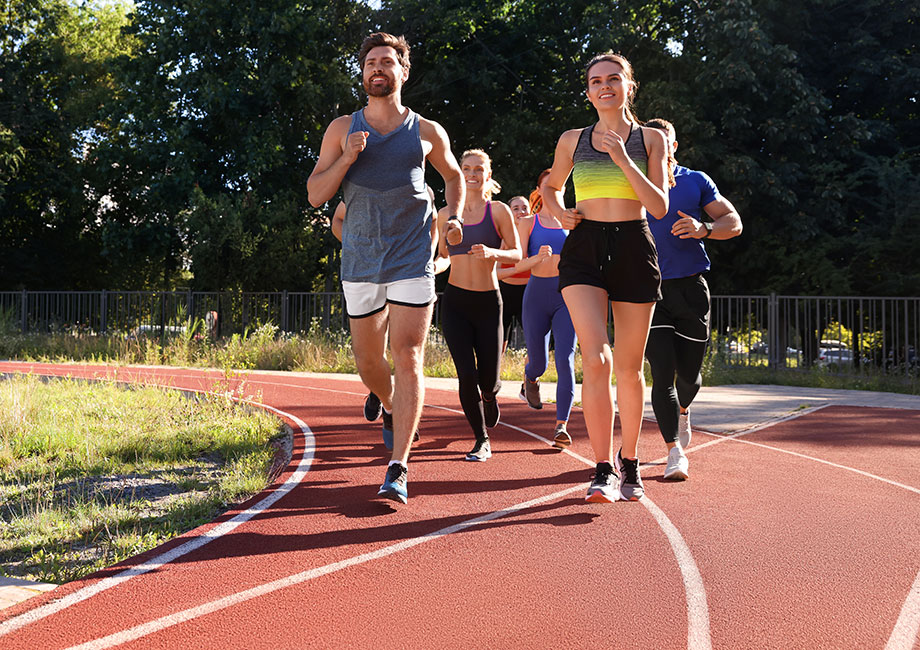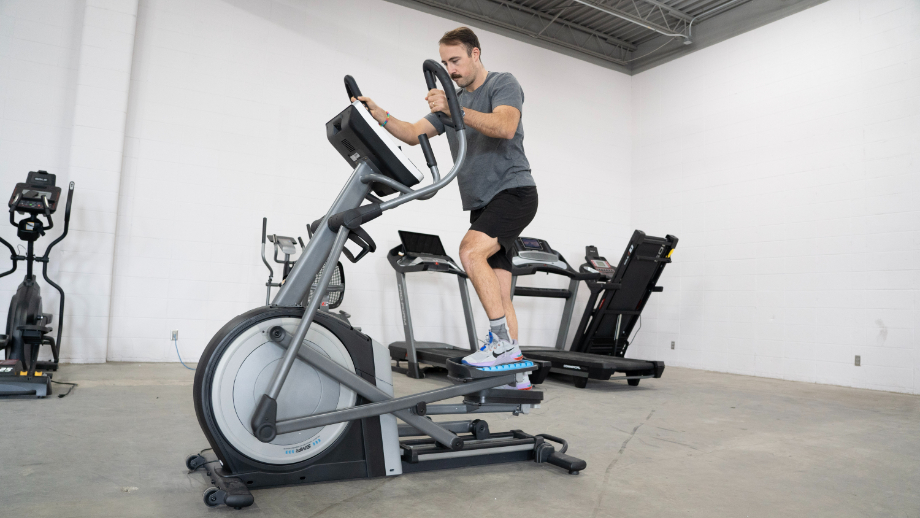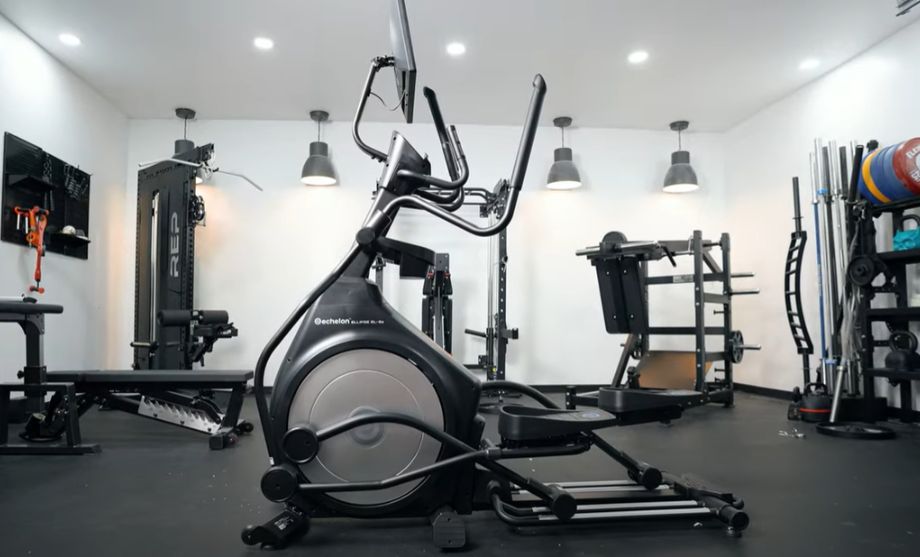As a personal trainer and competitive runner, I always encourage folks to try a full-on road race. The 10k runs are super popular among advanced and recreational runners alike. But whether you’re a beginner runner looking to try your first race or an experienced runner who just runs for fun, you may be wondering, “How many miles is a 10k?”
In this article, we’ll explore the 10k distance and share some training tips to help you build endurance and reduce your risk of injury while training for your next race.
How Far Is 10k in Miles?
For easy math, 1 kilometer equals 0.62 miles. So a 10k is 10 kilometers, or 6.2 miles.
A 10k is one of the common long-distance races; the others are the half-marathon and marathon. There are also the 5k (3.1 miles) and 1500-meter (metric mile) distances, but those really aren’t long distances. In fact, those are considered middle distance if you want to use snooty track terms.

A 10k is a step up from the 5k and can be a good choice for your first race, especially if you want to eventually train for a half-marathon. That said, the 10k does require a structured training program, regardless of your fitness level. Below, we’ll get into some good running tips that both beginners and advanced runners alike can incorporate into a solid training plan.
RELATED: Marathon Training Plan
What Is a Good 10k Time?
I’m a 41-year-old competitive runner and just set my 10k personal best this April at 39:18. For comparison, the current world record for the men’s 10k is 26:43, held by Joshua Cheptegei of Uganda. Beatrice Chebet of Kenya holds the women’s 10k world record at 28:54. That’s barely over 4 minutes per mile!
OK, now that you know your goal pace, let’s get into workouts. Just kidding. Don’t be discouraged by these record-setting times. Getting across the finish line is a decent accomplishment, no matter your race pace. That said, a good finish time for beginners to aim for is below 60 minutes. More experienced runners should aim for a finish time closer to 45 to 50 minutes.
You can compare your current pace to paces for different age groups to see where you fit. Some runners may be faster, while others may need a bit more work to reach these finish times. Below are some examples of average 10k times by age group according to Running Level:
Average 10k Times for Men
| Age | Beginner | Novice | Intermediate | Advanced |
| 20 | 1:05:30 | 54:39 | 46:43 | 40:54 |
| 30 | 1:05:30 | 54:39 | 46:43 | 40:54 |
| 40 | 1:07:58 | 56:43 | 48:29 | 42:26 |
| 50 | 1:13:42 | 1:01:30 | 52:34 | 46:01 |
| 60 | 1:20:30 | 1:07:11 | 57:25 | 50:16 |
Average 10k Times for Women
| Age | Beginner | Novice | Intermediate | Advanced |
| 20 | 1:13:58 | 1:02:48 | 54:19 | 47:57 |
| 30 | 1:13:58 | 1:02:48 | 54:19 | 47:57 |
| 40 | 1:16:43 | 1:05:08 | 56:20 | 49:44 |
| 50 | 1:23:41 | 1:11:03 | 1:01:27 | 54:15 |
| 60 | 1:34:18 | 1:20:04 | 1:09:15 | 1:01:08 |
Keep in mind these times are averages. Don’t let these dictate how fast you should go. Also, know that your race pace and effort will depend on the race distance.
How To Train for a 10k
Training for a 10k is no different than training for, say, a 5k, but the total volume will differ. Intermediate runners and advanced runners will likely already have a training plan locked in. Beginners will need to build a training program around their fitness level.
Give yourself at least 8 weeks to train for a 10k. Twelve is even better. If you start training too far out, you risk burning out.
A typical 10k training program will consist of three to five runs per week. The majority of these runs will be long and possibly boring, but those are really where the gains are made. Try to work up to at least 20 total miles of running per week. That may sound like a lot, but according to a study1 published in 2022, elite track runners can log over 100 miles per week!
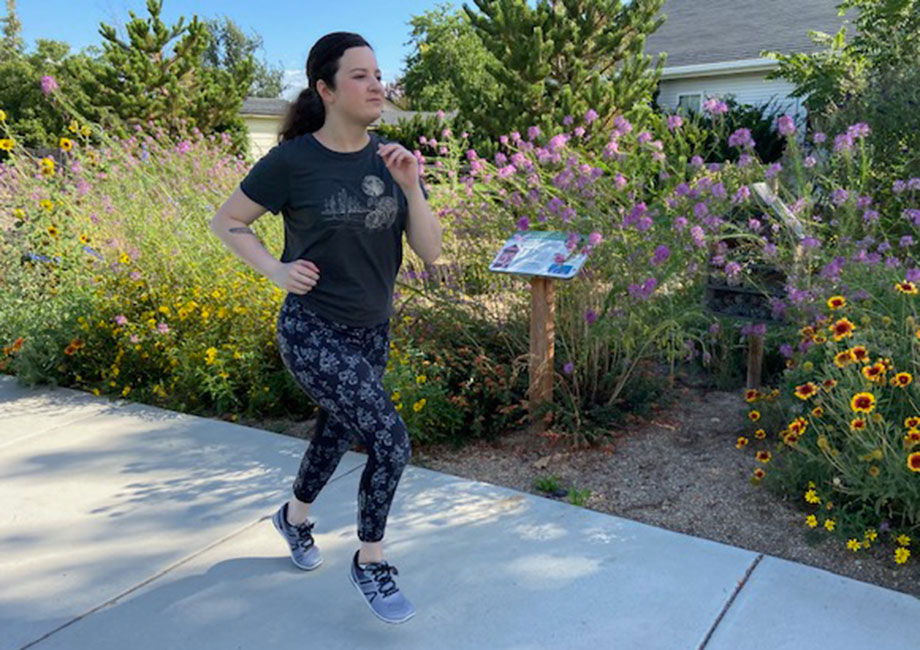
Find a good route that will keep you motivated to run, whether it’s right out your front door or down the road at a park. Look for an area that gives you some flat ground, maybe a few hills, and some privacy when you’re at the end and can’t hide your “Why did I do this?” face.
Also, consider joining a training group or hiring a coach. The primary benefit of either is structure. Coaches and clubs also offer camaraderie, which builds confidence and friendly competition. A good running coach or club will furnish a solid training program regardless of your schedule and fitness.
Once you have your training program down, it’s just a matter of consistency. You may progress quickly, but it’ll require you to be patient and confident.
9 Tips to Run a 10k Faster
Assuming you’ve already committed to the mileage, have a race date, and have a decent training program in place, below are some tips for running long distances that have helped me become a more confident, patient, and, of course, faster runner.
1. Build Your Aerobic Base
The single most important aspect of race training is aerobic endurance. The better your aerobic base, the faster and more powerful you get. Long slow runs build your aerobic base and your tolerance. They should be the bulk of your distance— long slow miles account for >80% of the elite runners’ total training miles1. If your goal finish time is just over an hour, that’s ~10 minutes per mile.
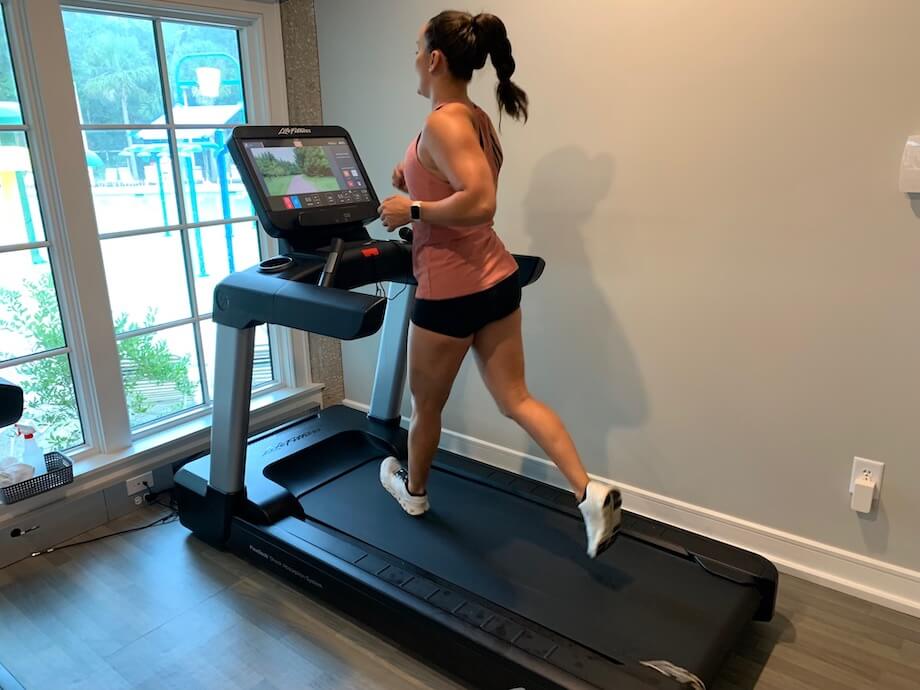
You’ll want your slow days to be about 12 minutes per mile. Start with a reasonable distance and gradually increase. Ideally, your long days will be longer than the race distance, or at least as long. Slow and steady wins the race.
RELATED: Best Hydration Vests for Runners
2. Watch Your Nutrition
Second only to actually running, nutrition will absolutely make or break your training and racing. Generally speaking, you will need to consume more carbohydrates to maintain muscle glycogen and more protein to help maintain muscle mass.
I can’t tell you how much to eat, but it needs to be enough. You’ll know what’s not enough when you fatigue early and/or don’t recover well enough. Here’s a good energy intake calculator to get started. I also recommend hiring a registered dietitian if you want a highly personalized and effective nutrition plan.
You’ll also need to maintain your hydration. How much water you should drink a day depends on your overall activity level, the weather, and several other factors, but a good sign that you’re properly hydrated is when your urine is pale yellow. If you have dark urine or symptoms like dry mouth, headaches, and cramping, you may be dehydrated.
RELATED: Best Protein Powders for Runners
3. Wear Proper Running Shoes
Not all shoes are made equal. To tackle a 10k, you’ll need some good long-distance running shoes to help with shock absorption, foot support, and energy transfer. The right shoes for you will depend on your gait, your foot anatomy, and your comfort level. Most running shoe brands have guides on their websites to help you determine which style will best fit your needs.
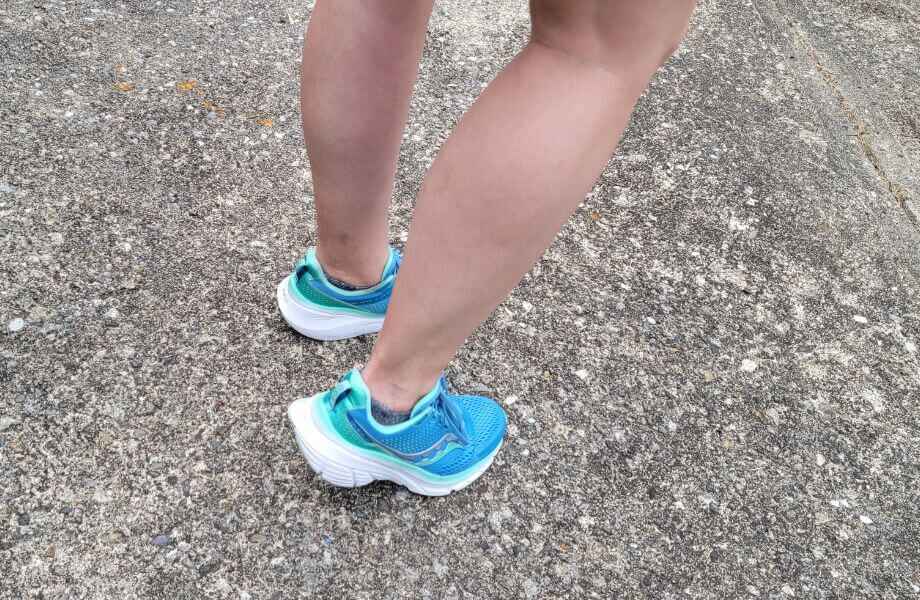
4. Vary Your Training Runs
To become a well-rounded 10k racer, you should incorporate speed, tempo, and long runs. It’s a good idea to throw in some sprints on the track as well. You’ll need the speed and power from track work plus the sustained aerobic capacity from long, slow days.
Tempo runs fall between your slow pace and your race pace. These are generally faster, sustained efforts meant to build up a tolerance to, well, faster paces. If your race pace is 8 minutes per mile, then a tempo pace may be about 9:30 per mile. Tempo runs should account for about 20% of your total mileage.
For your track workouts, perform sprints like 8 x 100 meters or 8 x 200 meters. One day a week on the track should be more than enough.
Speed work involves intervals that are just faster than your race pace. You can throw some intervals into your tempo days, or incorporate race pace intervals on the track. Either way, you’ll want to get used to the feeling of race day.
RELATED: Running Pace Calculator
5. Pick Up Your Knees
I can’t stress this enough—don’t slog through your runs. If you pick up your knees, you will start to naturally turn your feet over more, resulting in quicker, more relaxed feet. According to a 2020 review in Sports Biomechanics2, this can lead to faster paces and less fatigue.
6. Cross-Train
Don’t neglect strength training and interval training. Low-intensity resistance training will promote stronger muscles and joints, leading to better overall fitness and conditioning. However, don’t go all out on everything. Prioritize running and add in weights as you can, and don’t neglect core work.
RELATED: Cross-Training for Runners
7. Incorporate Rest Days
Remember that sometimes the couch is your friend. Rest days are as important as running, as they promote recovery. Even world-record runners from Kenya and Ethiopia have good rest periods. Rest is critical for recovery and progression. It will help you avoid burnout and keep your mind right for race day.
8. Wear a Fitness Tracker or Download a Running App
If you can’t hire a coach but need some accountability, consider using a running app or wearable fitness tracker. Both tools can help you track time, distance, and pace.
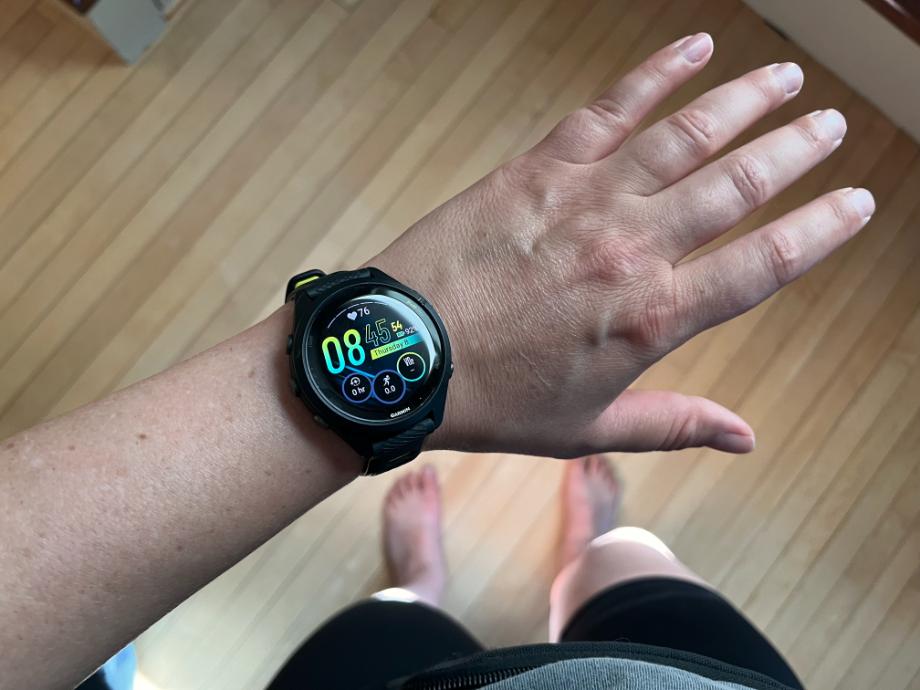
More advanced apps and watches, like the Strava app or the Garmin Forerunner 965, will give you metrics like cadence and stride length. They even have custom training programs built in. Fitness trackers may be the difference between winning your race and not even starting to train for one.
RELATED: Fitbit vs Garmin
9. Warm Up and Cool Down
Start every run with a warm-up that includes calisthenics, slow jogs, strides, and dynamic exercises. Get your heart going and muscles ready.
Finish each run with a good cooldown, too. Simply bring down your pace, and then progress into some easy stretching.
How Many Miles Is a 10k? Final Thoughts
A 10k is 6.2 miles. It’s one of the most popular road races for recreational runners and advanced runners alike. The 10k run can be daunting, but with the right mindset, training program, and tools, you’ll be crossing the finish line in no time.
As a competitive runner myself, I recommend following the below tips to do well in your next 10k race:
- Get a good training program. A simple online search will yield tons of similar training programs. Find the one that works for you and stay committed. A good program will consist of long slow days, with some faster days or hills sprinkled throughout.
- Get good shoes. This speaks for itself. The best running shoes will treat you well and carry you across the finish line.
- Eat well. Be prepared to eat more, particularly carbohydrates, to keep you fueled during training and racing day.
- Consider tracking your training with an app or wearable fitness tracker. Knowing your effort and other metrics can help you stay on track and motivated.
How Many Miles Is a 10k? FAQs
How many miles should I run for a 10k?
You should be able to run at least 6.2 miles comfortably to place well in a 10k. During your training, aim for 20 miles per week and incorporate a good mix of speed and aerobic workouts.
How long does it take to run 10k?
If your name is Joshua Keptegei or Beatrice Chebet, you can probably run a 10k in around 27 minutes. If you’re anyone else, somewhere between 45 minutes and just over an hour (for men) or 50 minutes and an hour and 20 minutes (for women) is pretty average.
How many miles is a 5k?
A 5k is 3.1 miles, half the distance of a 10k.
What is the average time for a 10k for a woman?
The average 10k finishing time for a beginner woman between 20 and 30 years old is an hour and 13 minutes.
References
- Haugen, T., Sandbakk, Ø., Seiler, S. et al. The Training Characteristics of World-Class Distance Runners: An Integration of Scientific Literature and Results-Proven Practice. Sports Med – Open 8, 46 (2022). https://doi.org/10.1186/s40798-022-00438-7
- van Oeveren, B. T., de Ruiter, C. J., Beek, P. J., & van Dieën, J. H. (2024). The biomechanics of running and running styles: a synthesis. Sports biomechanics, 23(4), 516–554. https://doi.org/10.1080/14763141.2021.1873411



